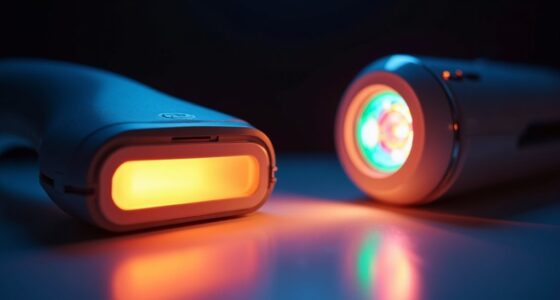IPL can effectively reduce superficial pigmentation and hyperpigmentation after a few sessions, with many people seeing noticeable, lasting results. It works by targeting melanin and blood vessels, breaking down pigmented spots and vascular lesions safely. While it’s great for Fitzpatrick skin types I to IV, it has limited depth penetration and is less effective for deep pigmentation like melasma. If you want to explore how IPL can work for you, keep going to find out more.
Key Takeaways
- IPL effectively reduces superficial pigmentation with 2-4 sessions, achieving 50-75% clearance in many cases.
- It targets melanin in superficial skin layers, providing safe, minimally invasive treatment for pigmentation issues.
- IPL’s limited penetration makes it less effective for deep pigmentation like melasma, often requiring multiple sessions.
- Results are generally lasting for several months to years, especially when combined with sun protection and maintenance treatments.
- Proper patient selection and treatment protocols are essential to maximize benefits and minimize risks such as hyperpigmentation.
Effectiveness of IPL on Pigmentation Improvement
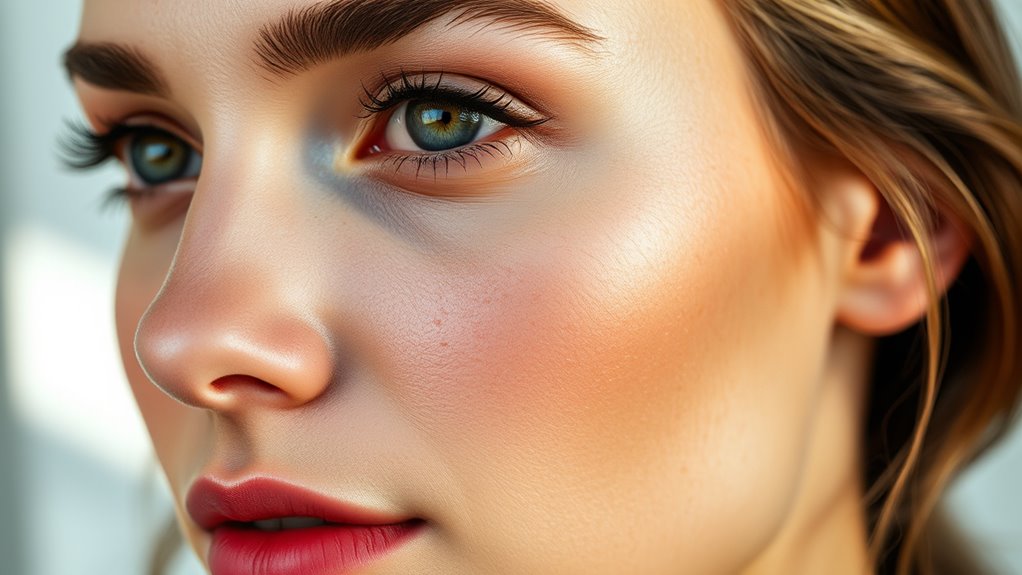
IPL has proven to be an effective treatment for improving pigmentation issues. Multiple studies show significant, lasting results after just a few sessions. For example, three IPL treatments can reduce irregular pigmentation with measurable improvements lasting up to nine months. Pigmentation clearance rates range from 50% to 75%, especially for conditions like poikiloderma and melasma. Feng et al. reported an impressive 84.6% improvement after three treatments, highlighting IPL’s strong efficacy. You can expect about a 70% reduction in brown spots and sun damage-related hyperpigmentation. Most treatments involve two to four sessions, with ideal results usually after three. Reflectance spectroscopy measurements confirm that pigmentation decreases significantly after IPL therapy, while individual factors like skin type and pigmentation depth influence outcomes, IPL is generally safe and effective for improving pigmentation with minimal side effects. Additionally, the safety profile of IPL makes it a popular choice among dermatologists seeking non-invasive options.
How IPL Targets Melanin and Vascular Components
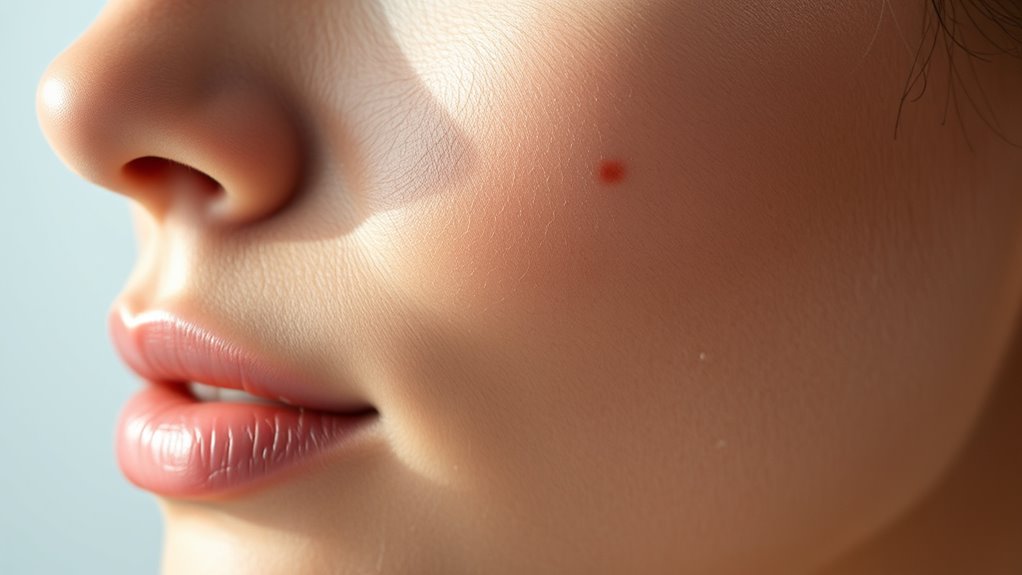
To effectively address pigmentation and vascular issues, light-based treatments target specific skin components through selective mechanisms. IPL emits broad-spectrum light pulses absorbed mainly by melanin and hemoglobin. When melanin absorbs the light, it converts to heat, damaging pigmented cells like melanocytes and melanosomes. This causes necrosis, prompting the skin to eliminate excess pigment gradually. For vascular components, IPL’s wavelength is absorbed by hemoglobin, heating blood vessels and leading to photocoagulation or thrombosis, which reduces redness and visible blood vessels. Wavelengths between 500 and 670 nm target superficial pigmentation, while longer wavelengths penetrate deeper to treat vascular lesions. Filters between 670 and 870 nm help protect the skin’s surface while optimizing the destruction of vascular and pigmented targets. Additionally, understanding how Honda Tuning techniques can improve engine responsiveness and stability provides insights into optimizing equipment for skin treatment devices, ensuring precise targeting and effective results.
Typical Clinical Protocols and Treatment Settings
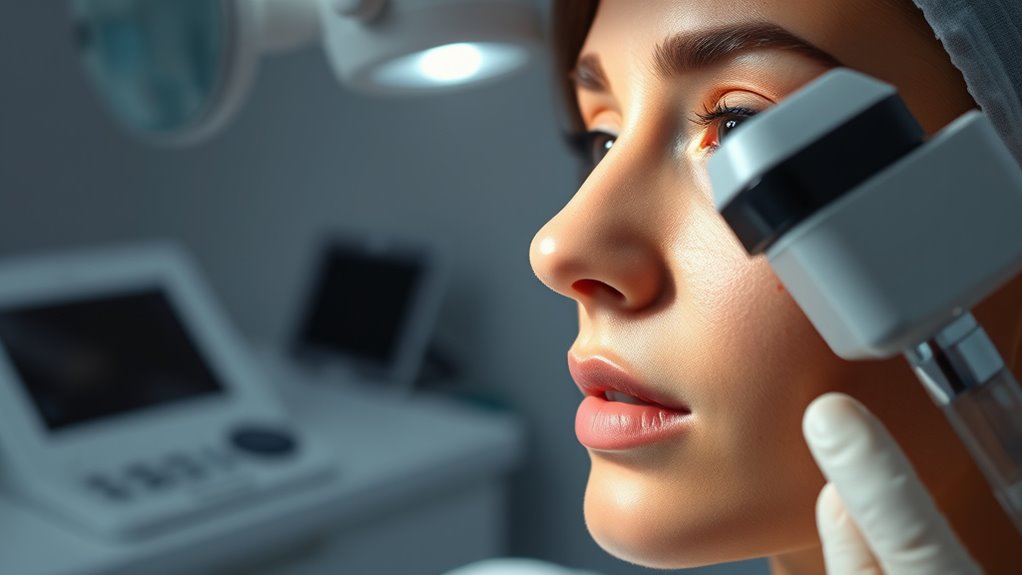
Effective clinical protocols for IPL treatments involve carefully selecting the number of sessions, treatment intervals, and specific settings based on your skin type and pigmented lesion severity. Typically, 4 to 5 sessions are recommended, spaced every 3 to 4 weeks, with some devices allowing twice-weekly treatments for resistant pigmentation. For maintenance, 2 to 4 sessions annually help sustain results. During treatment, 1 to 2 passes are common for Fitzpatrick skin types I-IV, while only 1 pass is advised for darker skin types to minimize risks. Pre-treatment guidelines include avoiding sun exposure for 4-6 weeks, discontinuing photosensitizing medications, and using sunscreen daily. Test spots at varying settings are essential to determine ideal energy levels, with post-treatment care focusing on sun protection and gentle skincare. Understanding cultural influences can enhance your overall approach to skincare and treatment success.
Safety Profile and Potential Side Effects
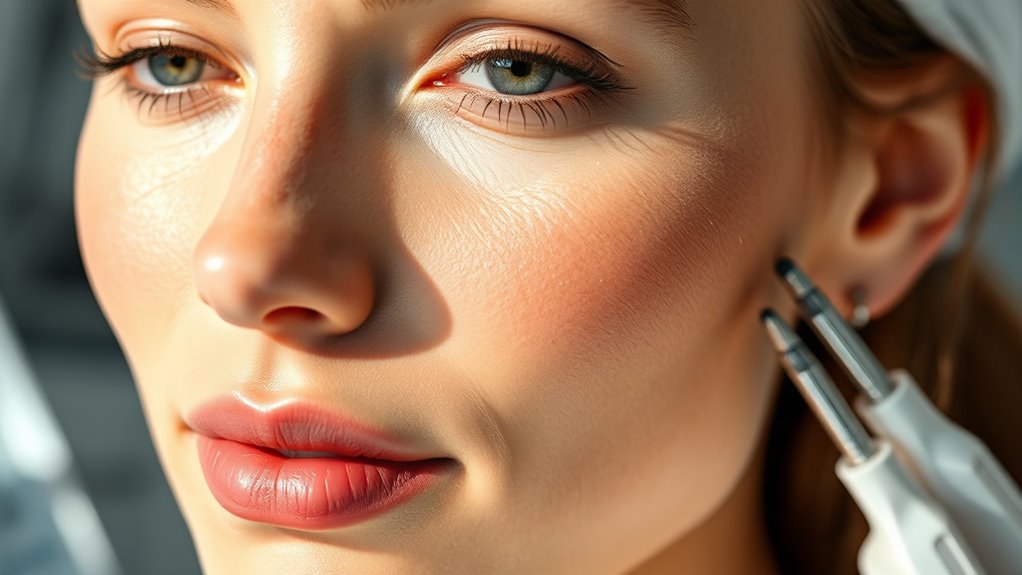
Understanding the safety profile and potential side effects of IPL treatments is essential for achieving ideal results with minimal risks. Typically, you’ll notice redness and mild discomfort immediately after treatment, which usually subsides quickly. Swelling may occur but often resolves within hours or days. Rarely, blistering or crusting can happen, especially in sensitive skin or with improper settings. Changes in pigmentation, like light or dark spots, might develop temporarily, particularly if sun protection isn’t maintained. IPL is generally safe when performed by professionals, with no evidence linking it to cancer or DNA damage. Research indicates that long-term effects are minimal when treatments are administered correctly. However, risks increase if you have tanned skin, active infections, or are on photosensitizing medications. Proper aftercare, including sun avoidance and gentle skincare, helps reduce side effects and supports safe healing. Additionally, using appropriate equipment and following manufacturer guidelines can further enhance safety and effectiveness.
Comparing IPL to Other Pigmentation Treatments
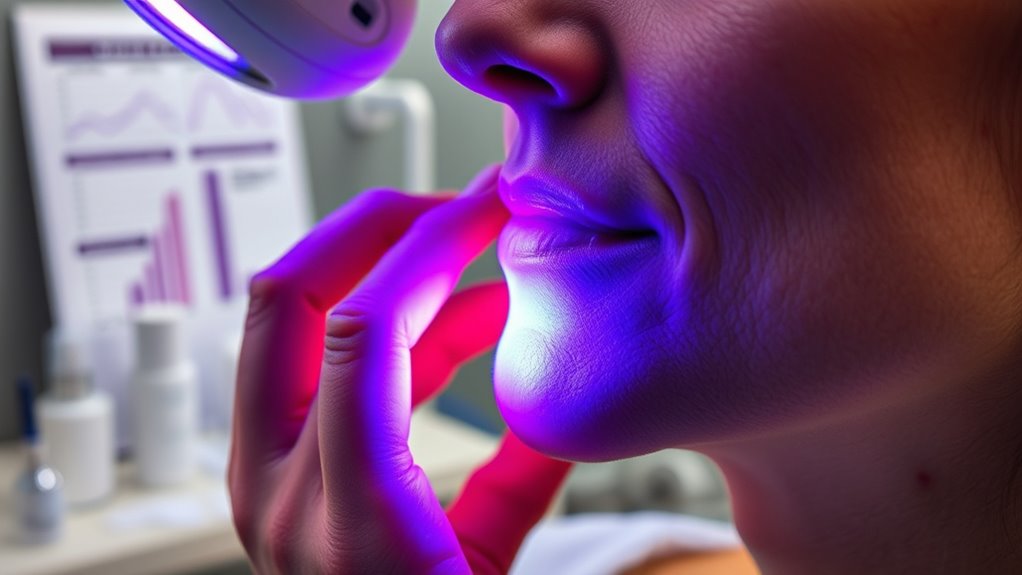
When comparing IPL to other pigmentation treatments, it’s important to recognize how each method targets skin concerns differently. IPL uses multiple wavelengths of pulsed light to heat pigmented cells and superficial vascular lesions, making it effective for sunspots, redness, and uneven skin tone with minimal downtime. Laser resurfacing, like Fraxel or CO2, penetrates deeper, treating scars, deep wrinkles, and severe sun damage but involves longer recovery and more side effects. Pico lasers physically fragment pigment particles, excelling at stubborn or deep pigmentation like melasma. Microneedling mainly boosts collagen, improving skin texture but less directly addressing pigmentation. Chemical peels exfoliate superficial layers, reducing mild pigmentation but often requiring downtime. Each treatment offers unique advantages depending on your skin concerns. Additionally, understanding the effectiveness of eye patches can be beneficial for overall skin health and rejuvenation, complementing pigmentation treatments.
Limitations of IPL in Addressing Deep Pigmentation
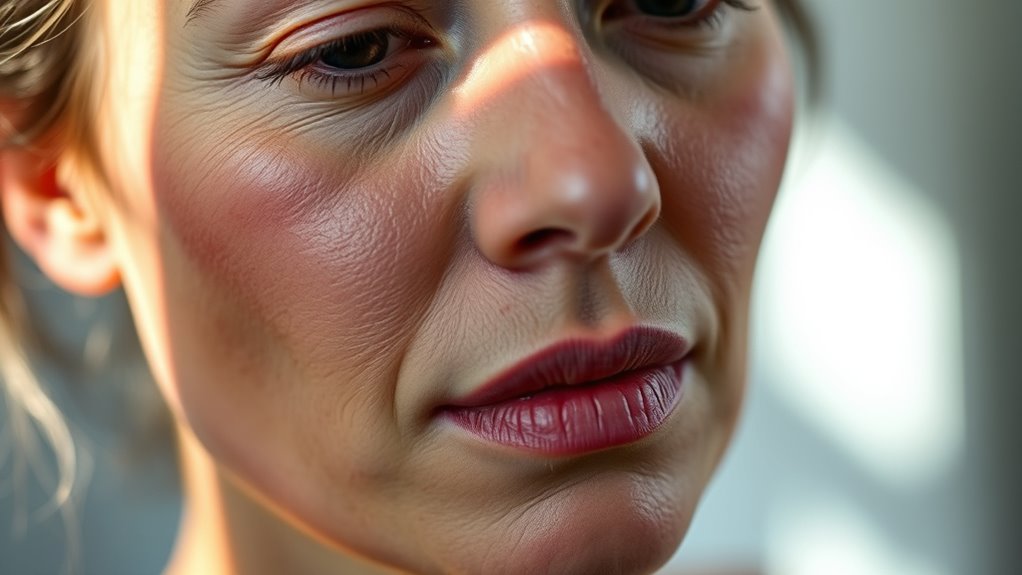
IPL mainly targets superficial skin layers, so it struggles to reach deeper pigmentation like melasma. Its broad-spectrum light scatters in the skin, limiting its effectiveness on stubborn or deep lesions. As a result, IPL often falls short in treating complex or dermal pigmentation issues. Because of this, IPL’s inability to penetrate deeply means it cannot fully address pigmentation that resides below the surface. Additionally, the limitations of light-based therapies highlight the challenge of targeting deeply embedded skin conditions.
Limited Penetration Depth
Despite IPL’s effectiveness on superficial pigmentation, its ability to address deeper skin lesions remains limited. IPL emits broad-spectrum light in wavelengths from 500 to 1200 nm, but its penetration depth depends on wavelength. Shorter wavelengths target superficial layers, while longer wavelengths reach deeper; however, even these have limited reach beyond the upper dermis. Adjusting filters can focus treatment on certain depths, but IPL struggles to effectively target pigmentation in the deep dermis or subcutis. The physics of light absorption and scattering in skin layers restrict IPL’s ability to reach these deeper areas. Additionally, the caffeine content in espresso can influence skin health, though it does not affect IPL’s penetration. As a result, while IPL can improve superficial pigmented spots, it’s generally ineffective for deeper lesions embedded below the epidermis or upper dermis.
Challenges With Melasma
Addressing deep pigmentation in melasma poses significant challenges due to IPL’s limited ability to target melanocytes located in the mid to lower dermis. This depth restricts IPL’s effectiveness, often resulting in only modest and short-term improvements. Additionally, IPL treatment carries risks of post-inflammatory hyperpigmentation (PIH) and hypopigmentation, especially in darker skin tones, which can limit its use and safety. Repeated sessions may reduce some side effects but do not guarantee long-lasting results, as melasma frequently recurs within a few months. Furthermore, IPL’s efficacy varies across skin types, with poorer outcomes in darker skin. Its inability to selectively target both vascular and pigmented components simultaneously further complicates treatment, making IPL less reliable for managing deep or complex melasma cases. The Limited penetration depth of IPL reduces its capacity to effectively treat deeply rooted pigmented lesions, which often require more targeted approaches. Additionally, the safety concerns associated with IPL in darker skin tones further limit its broad applicability for melasma treatment.
Reduced Efficacy on Deep Lesions
Have you ever wondered why IPL struggles to treat deep skin pigmentation effectively? The main issue is its limited penetration depth. IPL emits broad wavelengths, typically between 500–1200 nm, which mostly reach superficial to mid-dermal layers. Deep pigment in the lower dermis remains untreated because the light can’t reach those depths effectively. Melanin absorption primarily occurs in superficial layers, so deeper deposits are less affected. Additionally, IPL’s broad-spectrum light scatters energy, reducing targeting precision compared to lasers like Nd:YAG or Alexandrite, which can be tuned for specific depths. To avoid burns and hyperpigmentation, treatment parameters are conservative, limiting effectiveness on deep lesions. The diffuse light emission increases the risk of side effects and diminishes the ability to target specific depths, further reducing its efficacy for deep pigmentation. Moreover, the penetration depth of IPL is inherently limited compared to specialized laser technologies, making it less suitable for addressing deeper dermal deposits. Consequently, IPL often requires multiple sessions, but it rarely provides lasting results for deep pigmentation, making it less suitable for treating deep dermal deposits.
Long-Term Results and Maintenance Strategies
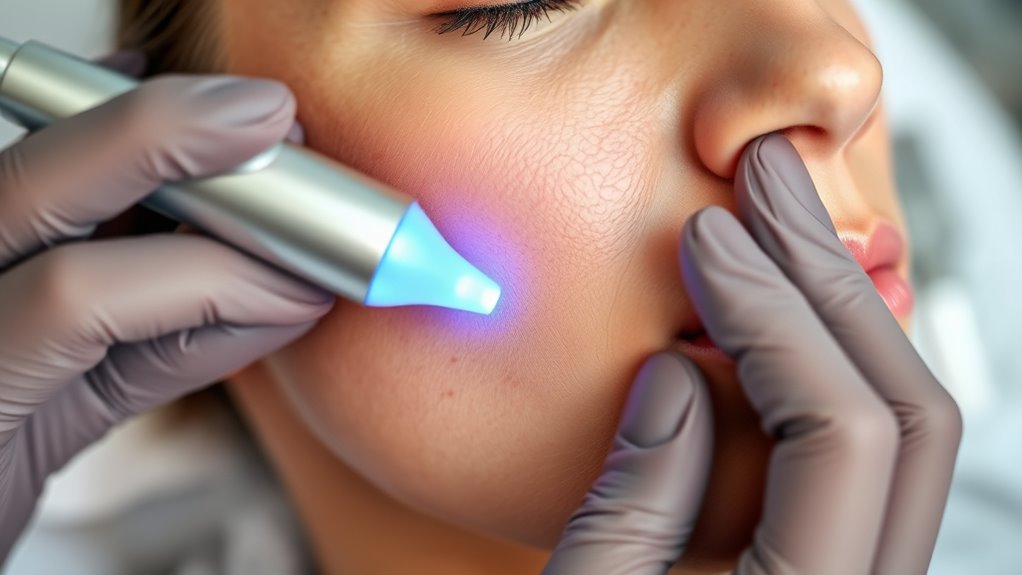
Long-term results from IPL treatments for pigmentation can be maintained effectively with proper strategies. After a series of 4 to 6 sessions, most patients see significant improvement, which can last several months to years with ongoing care. To sustain these results, schedule maintenance treatments every 6 to 12 months, or as needed, to address new pigment formation and aging effects. Consistent sun protection and regular use of broad-spectrum sunscreen are essential to prevent recurrence. Lifestyle factors, such as minimizing sun exposure, play a vital role in preserving your skin’s clarity. Monitoring your skin for new pigmentation allows timely intervention. Completing the initial treatment series before maintenance and adhering to a tailored schedule maximizes long-term benefits, keeping your skin looking clearer and more even over time. Additionally, understanding the role of AI in Business, such as analyzing patterns of pigmentation recurrence, can help tailor personalized maintenance plans.
Patient Selection and Customizing IPL Treatments
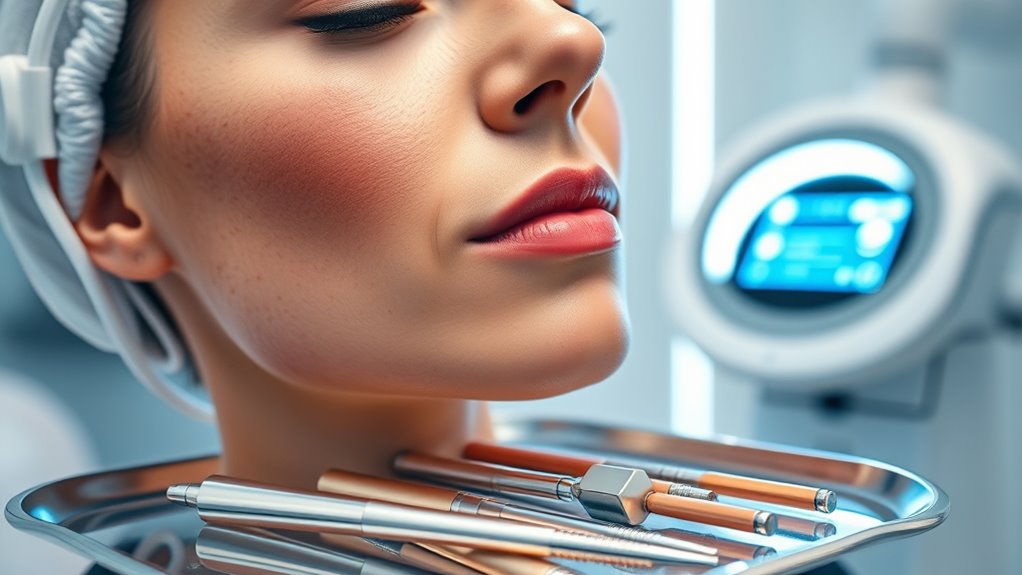
Selecting the right patients for IPL treatment is crucial to guarantee safety and effectiveness, as not everyone is a suitable candidate. Patients with Fitzpatrick skin types I to IV typically respond best, while darker skin types V and VI carry higher risks of pigmentary issues and are generally avoided. Active skin conditions, photosensitivity, or medications like isotretinoin or blood thinners require careful evaluation before proceeding. Pregnant individuals should also avoid IPL due to limited safety data. Proper assessment ensures tailored treatment protocols.
| Skin Type | Recommended IPL Approach |
|---|---|
| I-IV | 1-2 passes, wavelengths 515-580 nm |
| V-VI | Fewer passes, cautious wavelength use |
| Photosensitive | Avoid IPL or modify settings |
| Active skin conditions | Defer treatment until resolved |
Future Directions and Ongoing Research
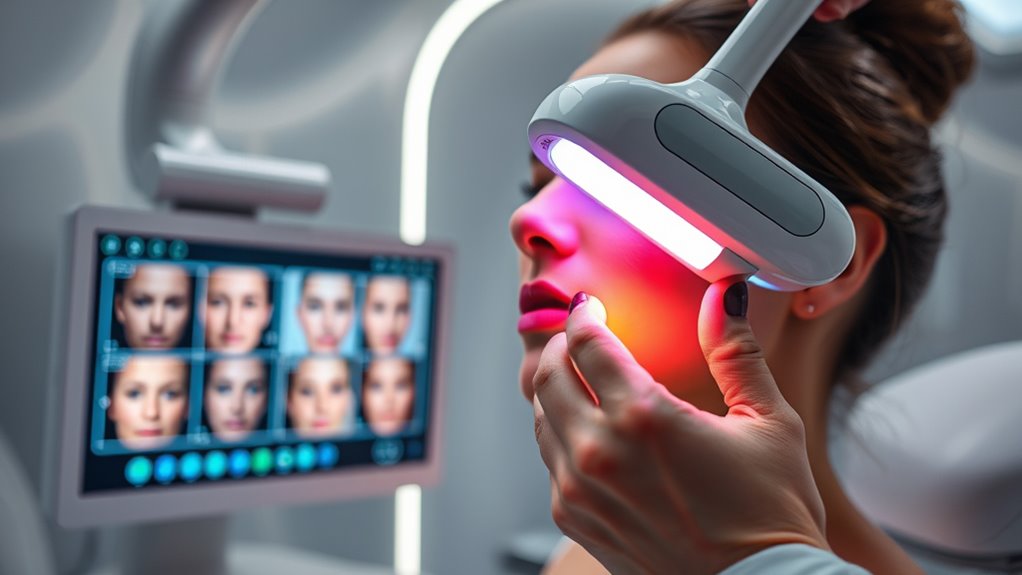
Recent advancements in IPL technology are transforming pigmentation treatment by enhancing safety, precision, and personalization. Real-time skin sensing now optimizes pulse intensity for different skin types and pigmentation levels, reducing side effects. Multispectral IPL devices allow targeting of multiple chromophores with customizable wavelengths, improving treatment accuracy. AI algorithms support personalized plans by analyzing pigmentation patterns and predicting ideal settings. Enhanced cooling systems and pulse modulation minimize risks like post-inflammatory hyperpigmentation, especially in darker skin. Researchers are exploring combining IPL with other modalities such as RF and fractional lasers to improve outcomes for stubborn pigmentation. Additionally, ongoing studies focus on integrating gene-targeted therapies, topical agents, and microbiome-friendly skincare, aiming to boost IPL’s effectiveness and longevity while reducing recurrence and irritation. This ongoing research underscores the importance of personalized treatment approaches in achieving optimal results.
Frequently Asked Questions
Can IPL Completely Eliminate All Types of Pigmentation?
You might wonder if IPL can completely eliminate all pigmentation types. The research shows it’s effective for many, especially superficial pigmentation like photoaging spots and telangiectasias, with high success rates. However, it doesn’t fully clear deeper or complex pigmentation, such as deep dermal melasma, and recurrence is common. Multiple sessions help improve results, but complete, permanent removal isn’t guaranteed due to the limitations in targeting deeper pigmentations.
How Does IPL Perform on Melasma Compared to Other Treatments?
You’re wondering how IPL stacks up against other treatments for melasma. Research shows IPL considerably reduces severity, especially when combined with other therapies, and targets both pigmented and vascular components. While Q-switched Nd:YAG laser is more effective, IPL offers a good balance of efficacy and fewer side effects, making it a safe choice—particularly for darker skin types—if your operator adjusts the parameters carefully.
Are There Specific Skin Types That Respond Better to IPL?
Think of your skin as a canvas; some shades respond more vividly to IPL’s brush. If you’re fair-skinned, like a porcelain doll, IPL tends to work like magic, fading pigmentation with ease. For darker tones, it’s more like a delicate dance—requiring careful steps to avoid unwanted spots. So, lighter skin types generally respond better, but with proper precautions, darker skin can still see noticeable improvements.
What Is the Typical Recovery Time After IPL Pigmentation Treatment?
After IPL pigmentation treatment, you can expect a recovery period of about 1 to 2 weeks. During this time, redness and sensitivity fade, and pigmented spots darken before flaking off. Most peeling finishes within two weeks, revealing improved skin tone. Some stubborn spots may take longer or require additional treatments. It’s important to follow your dermatologist’s advice, use sunscreen, and be gentle with your skin during healing.
Does IPL Prevent Future Pigmentation From Forming?
Sometimes, the future holds surprises we’d rather avoid. IPL’s gentle touch can help prevent new pigmentation by calming inflammatory responses and reducing oxidative stress caused by UV exposure. It targets the underlying mechanisms that trigger melanin production, potentially offering long-term benefits. While individual results vary, consistent IPL treatments may help you maintain clearer, more even skin over time, decreasing the likelihood of future pigmentation spots forming.
Conclusion
Just like a skilled artist carefully shades a canvas, IPL can subtly improve pigmentation when used correctly. While it offers promising results, it’s not a magic wand—results vary, and maintenance is key. By understanding its strengths and limitations, you can decide if IPL fits your skin goals. With patience and proper care, you might just reveal a clearer, more even complexion, like a sunrise breaking through morning clouds.



